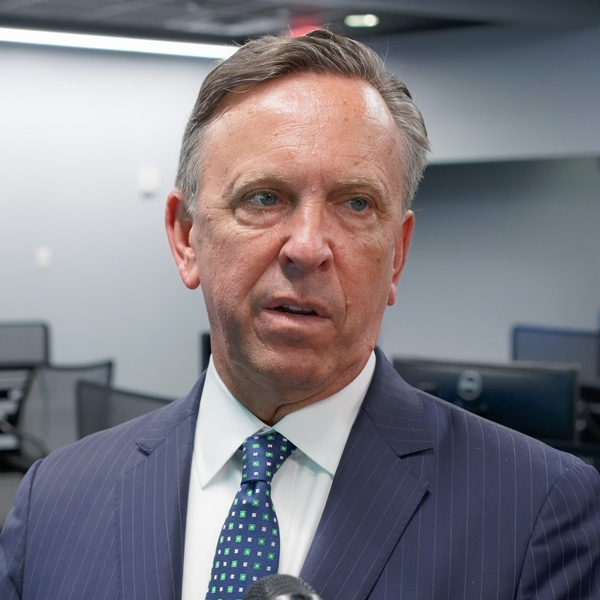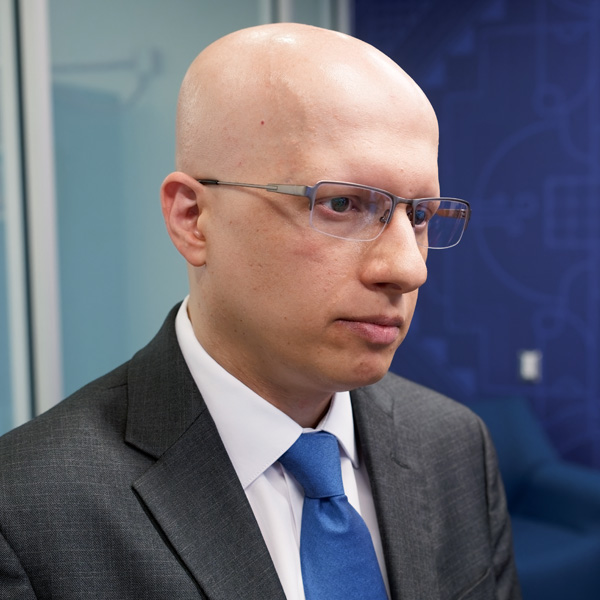The Biden administration on May 28 launched an effort to work with 21 states to help roll out advanced grid technologies.
The states participating in the Federal-State Modern Grid Deployment Initiative all have Democratic governors, who have committed to support the adoption of advanced grid solutions that expand capacity and add new capabilities to existing and new transmission and distribution lines.
The White House also held a summit on modernizing the grid with industry, regulators and other stakeholders focusing on advanced conductors, dynamic line ratings (DLR) and other grid-enhancing technologies (GETs).
“We think this is the lowest-hanging fruit of being able to get additional capacity on the grid and for the least amount of money,” Energy Secretary Jennifer Granholm said at the White House summit. “So, there’s no reason not to love grid-enhancing technologies.”
The Department of Energy is working to help utilities get comfortable with the technologies by testing advanced reconductoring at Idaho National Laboratory, with the Electric Power Research Institute and at the Georgia Institute of Technology.
The agency also recently released one of its “liftoff” reports on GETs, which said the technologies by themselves could meet the projected demand growth over the next decade, Granholm said. (See DOE Report Highlights Benefits of Advanced Technologies.)
Alongside the announcement, the U.S. Climate Alliance — a group of 24 states that includes the 21 in the initiative — said it would offer policy, technical and analytical assistance to help participating members carry out their commitments.
The states in the initiative agreed to deploy innovative grid technologies to bolster the capacity of the electric grid and more effectively meet demand, maximize the benefits of new and existing transmission infrastructure, increase the grid’s resilience to the growing impacts of climate change, and better protect consumers from volatility in energy prices.
FERC’s recently issued Order 1920 included a requirement that transmission planners evaluate their use in regional plans. In a recent interview on the order, Johannes Pfeifenberger, a principal at The Brattle Group, said GETs could be a key part of controlling transmission costs.
“And then you can create another third by sort of upgrading existing lines to higher voltages and things like that,” Pfeifenberger said. “And then the last third of doubling our transmission capability, then you’d have to build new lines. But we cannot afford to ignore the lower cost.”
LineVision CEO Hudson Gilmer said in an interview that dividing the grid buildout into thirds makes sense, though he thinks the monitors his firm sells to enable DLR are so affordable they could be used on new transmission lines to maximize those investments.
The firm has worked on dozens of projects in the U.S. and around the world, with two major domestic efforts being with AES utilities in Ohio and Indiana and National Grid in upstate New York, Gilmer said before the White House event.
LineVision is developing other projects, and Gilmer explained why he sees growth for the industry.
“The biggest thing that gives me optimism is the experience of the utilities [that] have deployed these technologies,” he said. “And they’re not one and done. They’re not stopping there. They’re saying, ‘We’re seeing amazing results here, and we want to roll this out more and more widely.’”
Dominion Energy’s Virginia Power utility is on pace to double its demand in the next 15 years, driven in large part by the rapid expansion of data centers in Data Center Alley about 30 miles west of the White House, said Matthew Gardner, the company’s vice president of electric transmission. He said that’s just half the challenge because the utility also sees its supply transition along with the most active interconnection queues in PJM.
“In addition to capacity, we look at the promise of GETs to provide … capability and flexibility as well,” Gardner said. “So that’s where GETs come into play.”
‘Absolutely Essential’
Dominion has run a number DLR pilots over the past decade, some of which have shown that some of its operational assumptions were too conservative because it found more capacity than expected. But the opposite has occurred in other cases, with some assumptions being too loose and requiring a reduction of flows on lines. In general, Dominion has seen the technology either open up or lower line capacities by 10 to 12%, Gardner said.
“DLRs are key to maximizing grid capabilities, especially those in situations where we’re taking outages for constructing grid upgrades,” Gardner said. “So, I like to think of DLR as being like flex lanes on the interstate that sometimes allow for additional traffic flows.”
GETs are poised to keep growing in Virginia because of recent legislation passed by both Democratic-controlled legislative chambers and signed by Gov. Glenn Younkin (R), said state Del. Phil Hernandez (D) at the White House summit.
“So really all this bill does … it says that anytime that a utility submits an IRP as part of their long-term energy planning, they have to do a comprehensive assessment of the potential application of grid-enhancing technologies,” Hernandez said. “So that is a first step for us.”
GETs have avoided the politicization accompanying transmission issues, as seen on Capitol Hill or in the dissent and concurrence related to FERC Order 1920, or with a bill passing unanimously out of the Utah Senate, though it ultimately did not clear the lower chamber this past session, said state Sen. Nate Blouin (D). The legislation was similar to what Hernandez helped push through in Virginia.
The conservative “Eagle Forum” usually does not get involved in energy issues, and Blouin said it has opposed many of his proposals in the past.
“One of their representatives got up to speak on my bill,” Blouin said. “And I was just thinking, ‘Oh, shoot, what’s he going to say about this one,’ and actually, it was a really positive comment. They were … very interested in the potential grid security and resilience-type aspects.”
The tool is resource-agnostic, which is important for states like Utah where the climate issues are not top of mind, but it still can help meet growing demand and provide resilience against issues like wildfires, he added.
But GETs can help in states with very different policies, such as California, where climate laws require the industry to bring on about 8,000 MW of renewable resources per year on average, but reliably and cost effectively, said CAISO CEO Elliot Mainzer.
GETs are in a place like where storage was just a few years ago — ready to take off, Mainzer added. California has 10 GW of storage now, while GETs are starting to be included in some of its regionally planned transmission projects.
“The way that our grid is operating today is transitioning so quickly,” he said. “Any of you that operate in the West, just the patterns of flows that we’re seeing, the type of generation on the grid — having this sophisticated portfolio of tools that can manage flows and manage this next generation of resources and do it honestly, reliably and as affordably as possible is absolutely essential.”

